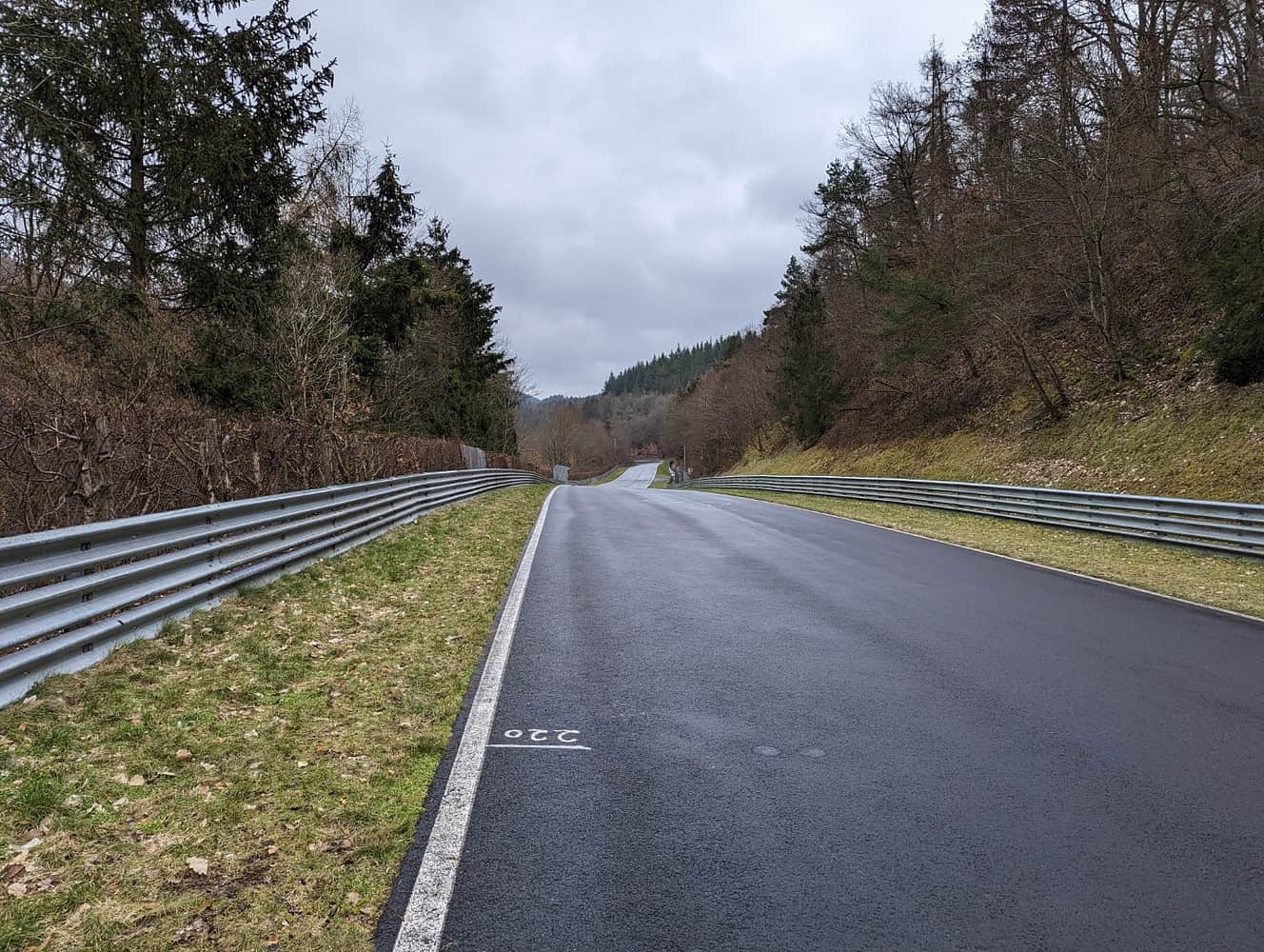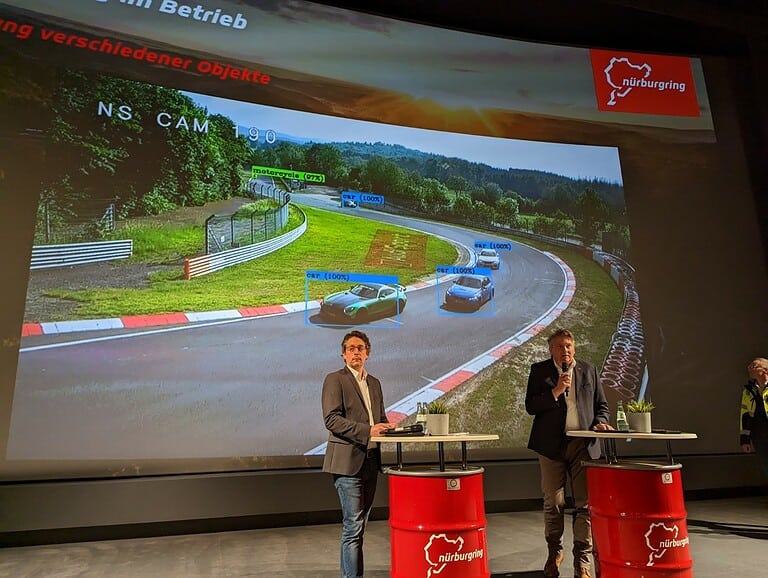Digitization project makes the 100-year-old Nordschleife much safer and offers even more possibilities toward the future.
The Nürburgring in the Eiffel region of Germany is one of the most famous race tracks in the world. In particular, the oldest section, the Nordschleife, can safely be called iconic. However, this more than 20-kilometer-long circuit also creates challenges around the safety of the people who put in their laps on the track. To address these challenges, the Nürburgring partnered with Fujitsu. Fujitsu invited us to take a closer look.
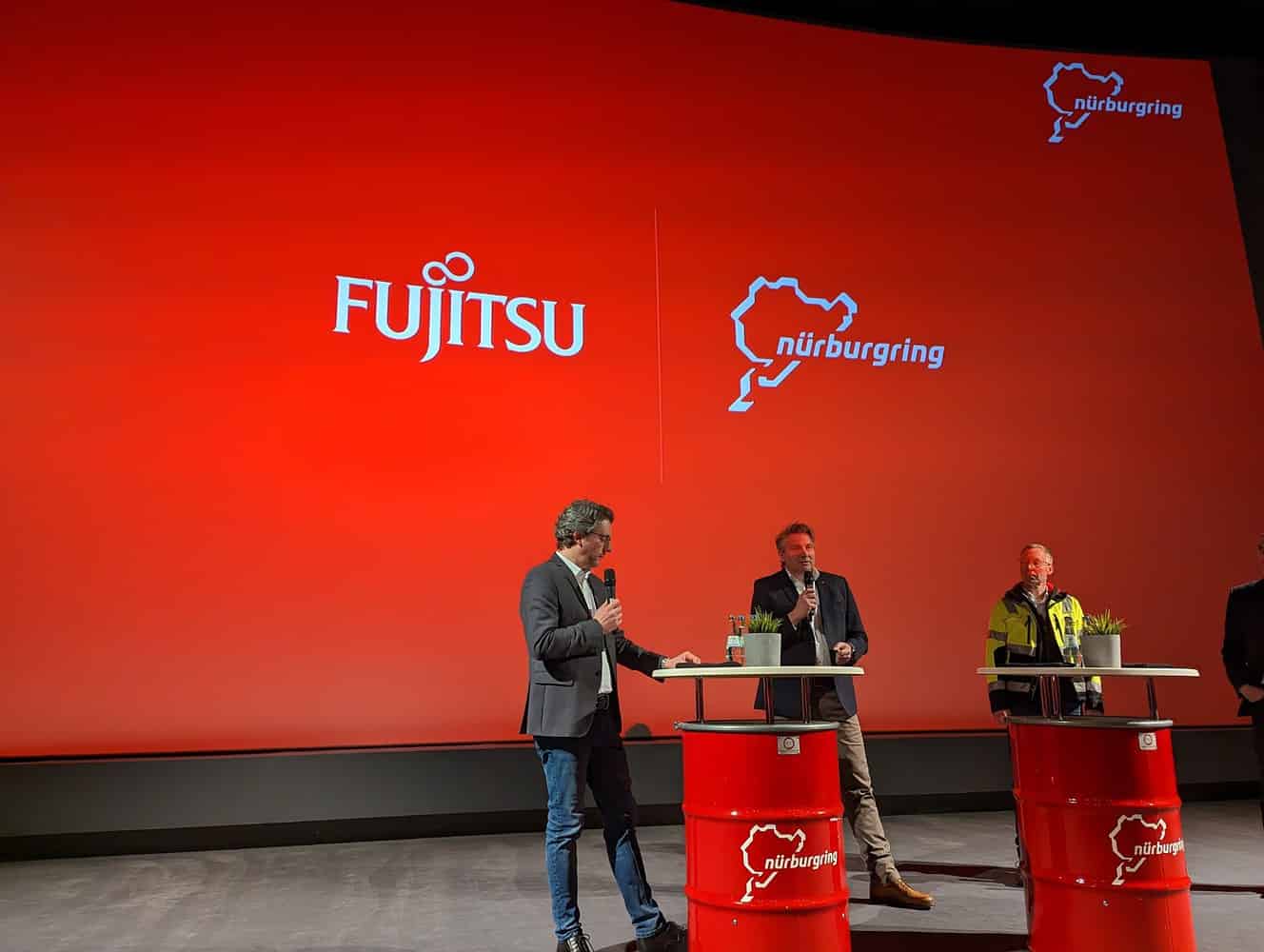
The Nordschleife
When we talk about the Nürburgring, we are not talking about one circuit, but two. There is the Grand Prix circuit, which can be used for an F1 Grand Prix and thus meets all the conditions set by the FIA for it. There is also the Nordschleife. The Grand Prix circuit dates back to the mid-1980s. The Nordschleife, also known as the grüne Hölle (green hell), was built between 1925 and 1927. The circuit is known for its length (over 20 kilometers) and its 2.5-kilometer long straight. In addition, enthusiasts will certainly know the Caracciola-Karussell. This is a bowl curve made of concrete as part of a wider curve made of asphalt. Some concrete sections have been here since construction. So these are almost 100 years old.
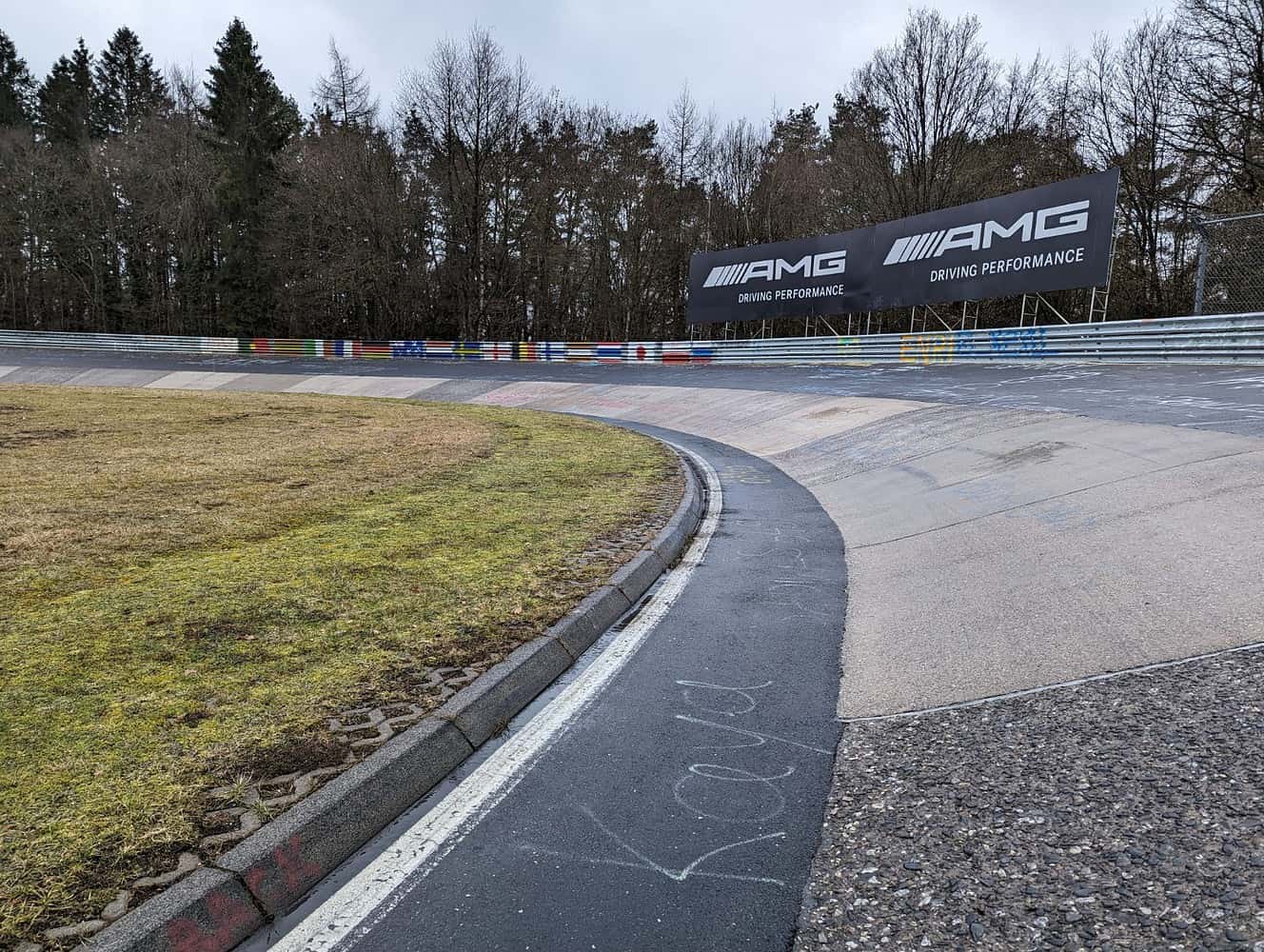
Furthermore, the Nordschleife is also known as a favorite destination for people who want to test in a controlled environment how fast their car or motorcycle can do a lap on this circuit. For an investment of 25-30 Euros (depending on the day), you can drive a lap on it. Finally, it is worth noting that the Nürburgring is not only used for car and motorcycle races. The music festival Rock am Ring also takes place annually. In addition, there are other sporting events, such as a cycling race.
All in all, it is a hive of activity on and around the Nordschleife. Literally every day there is something going on during the season. This season runs from March to October.
Grüne Hölle was a Black Hole
While the dimensions of the Nordschleife, combined with its long history, make the track special, they also create challenges. The main priority and also challenge for Nürburgring 1927 GmbH & Co. KG (as the company behind the two circuits is called in full), was and is the safety of the people using the Nordschleife. So the initial business case was to improve that safety, indicates Christian Stephani, one of the company’s two CEOs.
Noting that safety leaves something to be desired is one thing, actually doing something about it is quite another. After all, there was no significant infrastructure along the Nordschleife. Quite a few stretches of track weren’t only a green hell but also a black hole. By that we mean that it was simply not possible to gain insight into what was happening on the track at these stretches. Without that insight, race control couldn’t take action either.
To partly compensate for this, ‘old-fashioned’ radios were used and photographers next to the track doubled as stewards waving flags to indicate that a dangerous situation had arisen. None of that is very modern. Also, there are quite a few stretches of Nordschleife where photographers are not allowed. The reason for that is that those stretches are the most dangerous parts of the course.
Mind you, the cars that race around this track for much of the year are not race cars either. They are privately owned cars. There are no sensors or other technological gadgets in those cars. As such, they are of little help when it comes to gaining more and better insights into what happens on the track.
Investing in infrastructure
It was clear to Stephani and the rest of the leadership that they had to invest. A modern racetrack cannot do without infrastructure. And we’re not talking about laying new asphalt. They do that at the Nürburgring, of course, but that is not the infrastructure needed for a somewhat more data-driven approach. For that, the ground needs to be opened up and fiber optic cables put into the ground. A lot of fiber optic cables. That was also easier said than done by the way, because the ground around the Nordschleife does not belong to Nürburgring 1927 GmbH & Co. KG. This is in many cases owned by private individuals. Within the boundaries of the circuit alone are no fewer than three villages.
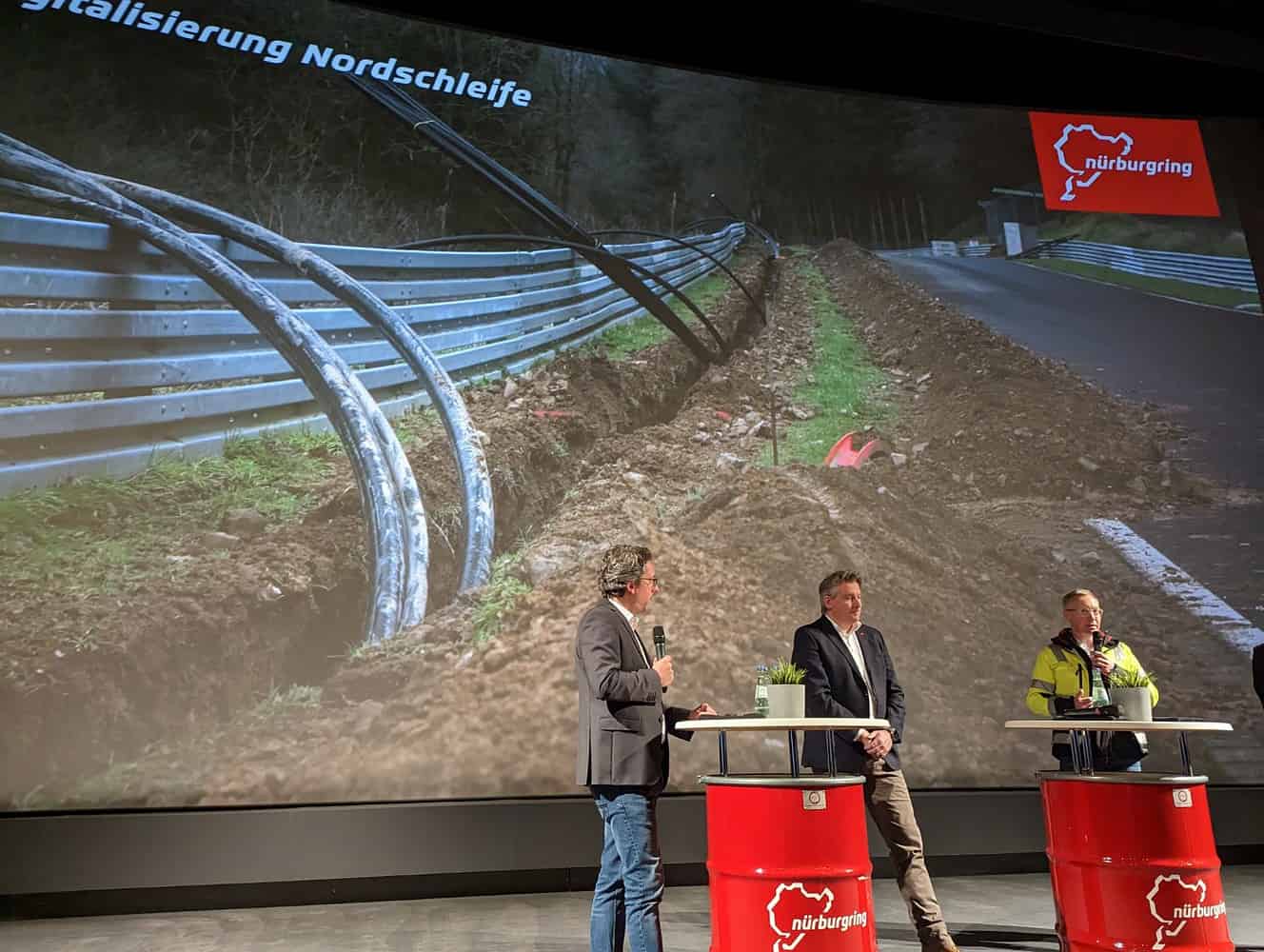
Therefore, the investment that the organization behind the Nürburgring had to make in the digitization project is not small by their standards. It amounts to a sum of 11 million euros. If you consider that for most racing years on the Nordschleife often only 1 million euros was spent and very occasionally 3 or 4 million, this is without a doubt a large investment.
Mind you, the project started in 2022 and has to be finished before the 2025 season starts, so the investment is spread over about three years. In those years, however, the usual investments in new asphalt and new guardrails will also be added. In total, the organization estimates the investments between 2014 and 2025 at over 25 million. 11 million euros of this will come from the digitization project for the Nordschleife.
Fortunately, they know what they are doing at the Nürburgring when it comes to rolling out such a project. After all, about four years ago they already tackled the Grand Prix circuit in a similar way. That was logistically simpler, of course, because smaller/shorter and not through backyards of local residents. However, the idea with the Nordschleife was the same, so in terms of technology they already had the necessary experience.
Fujitsu’s role
The goal of the €11 million investment is to have the Nordschleife fully wired with fiber optics by 2025 and to use this new infrastructure to make the circuit safer. This is to be done through no less than 150 4K cameras, which will send real-time images and alerts to race control. However, these images cannot be continuously reviewed by one or a few people there. There is far too much information coming in for that. That’s where the partnership with Fujitsu comes in. Fujitsu ensures that all images are analyzed using ML.
Race control receives immediate notification as soon as an incident occurs. With the number of cameras they want around the circuit, It’s virtually impossible for an incident not to be on captured on camera. Furthermore, it is also possible to see what actually caused the incident. It may have been caused a few turns before the location that sent the alert. That kind of information is valuable because it allows for better follow-up. Of course, it is also possible to quickly see how serious the incident is. That’s useful, because that way they also know at race control how many emergency vehicles they need to deploy.
Sports is an interesting sector for Fujitsu to focus on, we hear from Jörn Nitschmann, Head of Digital Transformation Unit DACH at Fujitsu. In addition to this project at the Nürburgring, there is also a project in Winterberg, at the almost equally famous bobsleigh track. There, among other things, they are working together to freeze the track as efficiently as possible. This can bring many benefits, both for the wallet and in terms of use of resources.
Fujitsu appears to have different criteria when it comes to collaborations within sports than other IT companies. In many other collaborations between major IT players and sports or sporting events, the emphasis is often on enhancing the fan experience during the game. In addition, the companies providing the services or infrastructure get to more or less show off, because it is very clear that they make this possible.
This is true of the collaboration between NTT and the Tour de France (in Dutch), between NTT DATA and The Open golf tournament, between Oracle and SailGP and the Premier League and AWS and the Primera Division, to name a few. Fujitsu is taking a different approach, it seems. The Nordschleife is about the safety of the people on and around the track and the Winterberg bobsleigh track is about economic and ecological arguments.
From 8 cameras on 2.5 km…
The cooperation between Fujitsu and Nürburgring 1927 GmbH & Co. KG has now been underway for about two years. That time Fujitsu has used mainly to lay a foundation. It has done this by setting up a test cluster at the Nürburgring. With this, it is analyzing a specific section of the track. This is the Döttinger Höhe, the long 2.5-kilometer straight. There, it analyzed the images from eight cameras to arrive at a workable ML model.
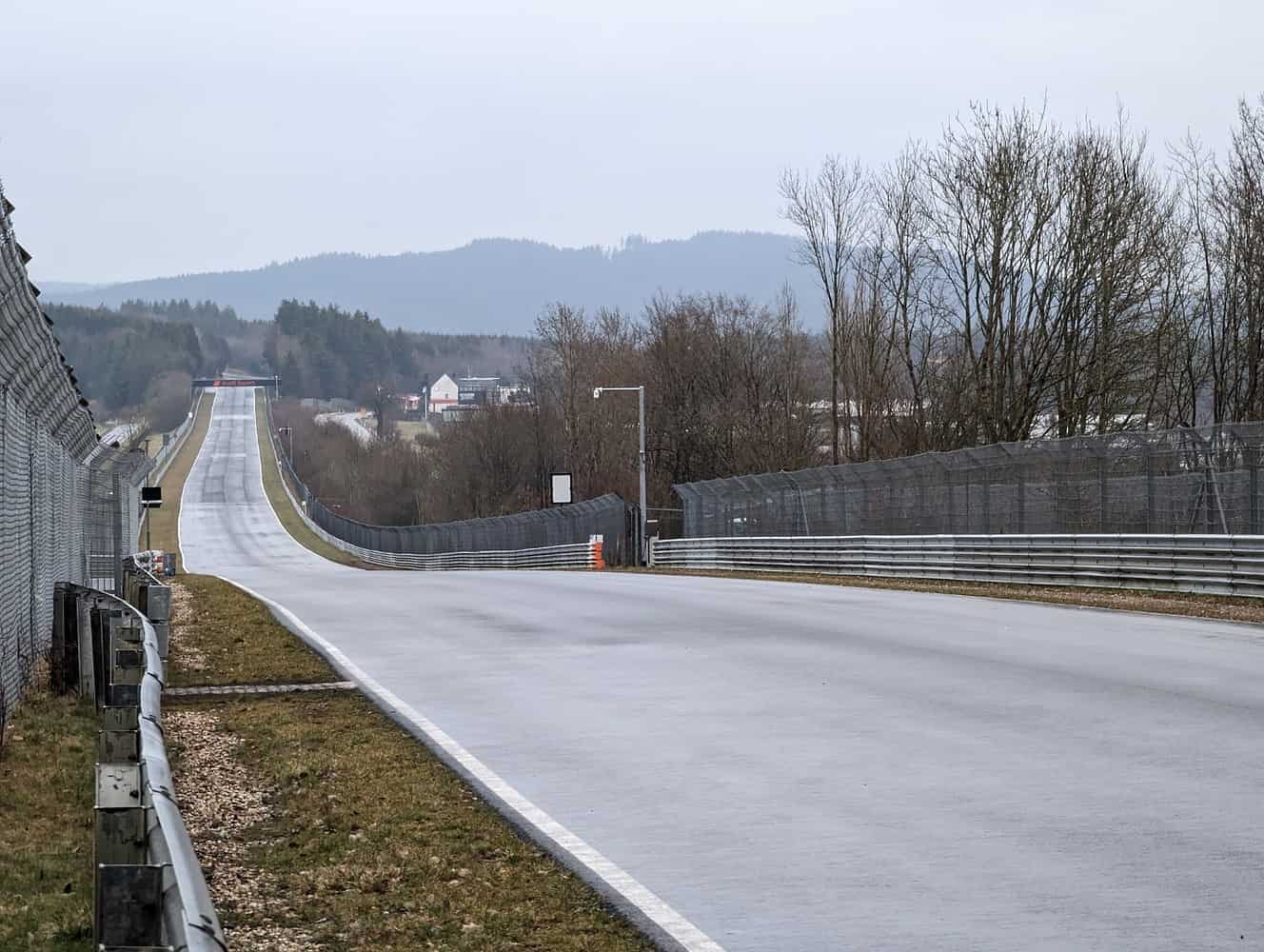
Fujitsu used only data captured by the eight cameras to train the ML model for the Nürburgring. It’s a closed system, so to speak. No data was used from external sources. The eight cameras provided enough data to train the model. This involves more than just recognizing cars and motorcycles as such, by the way. Different weather conditions may influence the result, but there may also be birds flying into view or spiders on the lens. Furthermore, it must be clear all the time and everywhere on the track what is a guardrail, what is grass and what is asphalt.
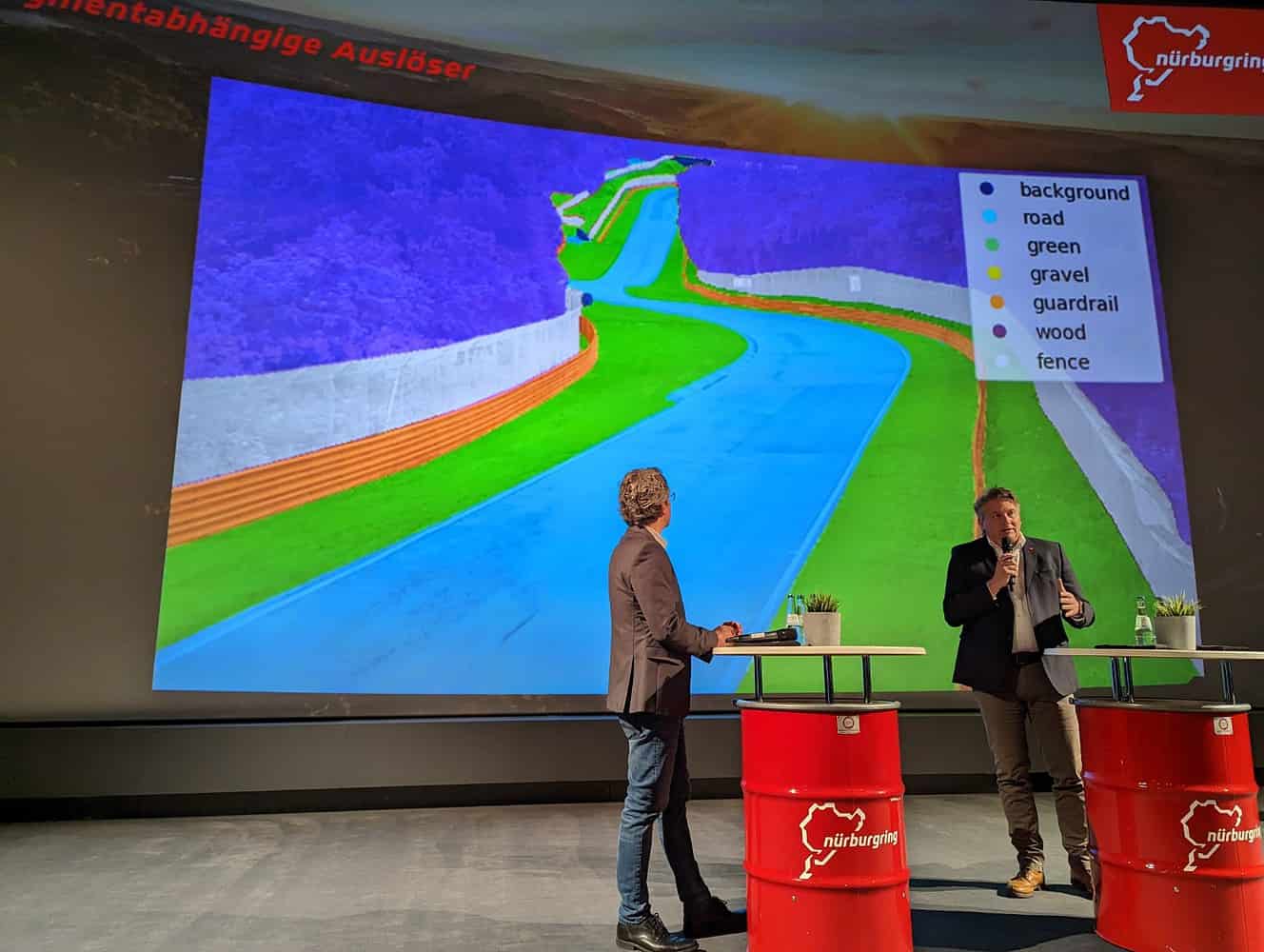
How much data Fujitsu used to train the ML model, we cannot say. We didn’t get an unequivocal answer to that question. But eight cameras recording nonstop in 4K undoubtedly generate many TBs of data. Not all of this data is needed to train the model, of course. It’s mostly the portions of the videos that contain incidents or other salient issues (such as parts of cars on the track, for example).
Fujitsu trained the model in its own data centers, by the way, not on-premises at the Nürburgring. The final model obviously does run on-premises, in one or more Fujitsu clusters. That is the only way to get the latency as low as possible and thus the security as high as possible.
…to 150 cameras at 20+ km
The test at the 2.5 kilometers long straight as we described above is basically complete. that is, they have a working ML model for this part of the Nordschleife. However, that does not mean that this can be simply transferred one-to-one to the rest of the track. Fujitsu did the test on the straight. The rest of the Nordschleife is very twisty and also has a lot of elevation change (more than 300 meters). These are things that should also be taken into account in the ML model’s assessment of situations. That is the next step.
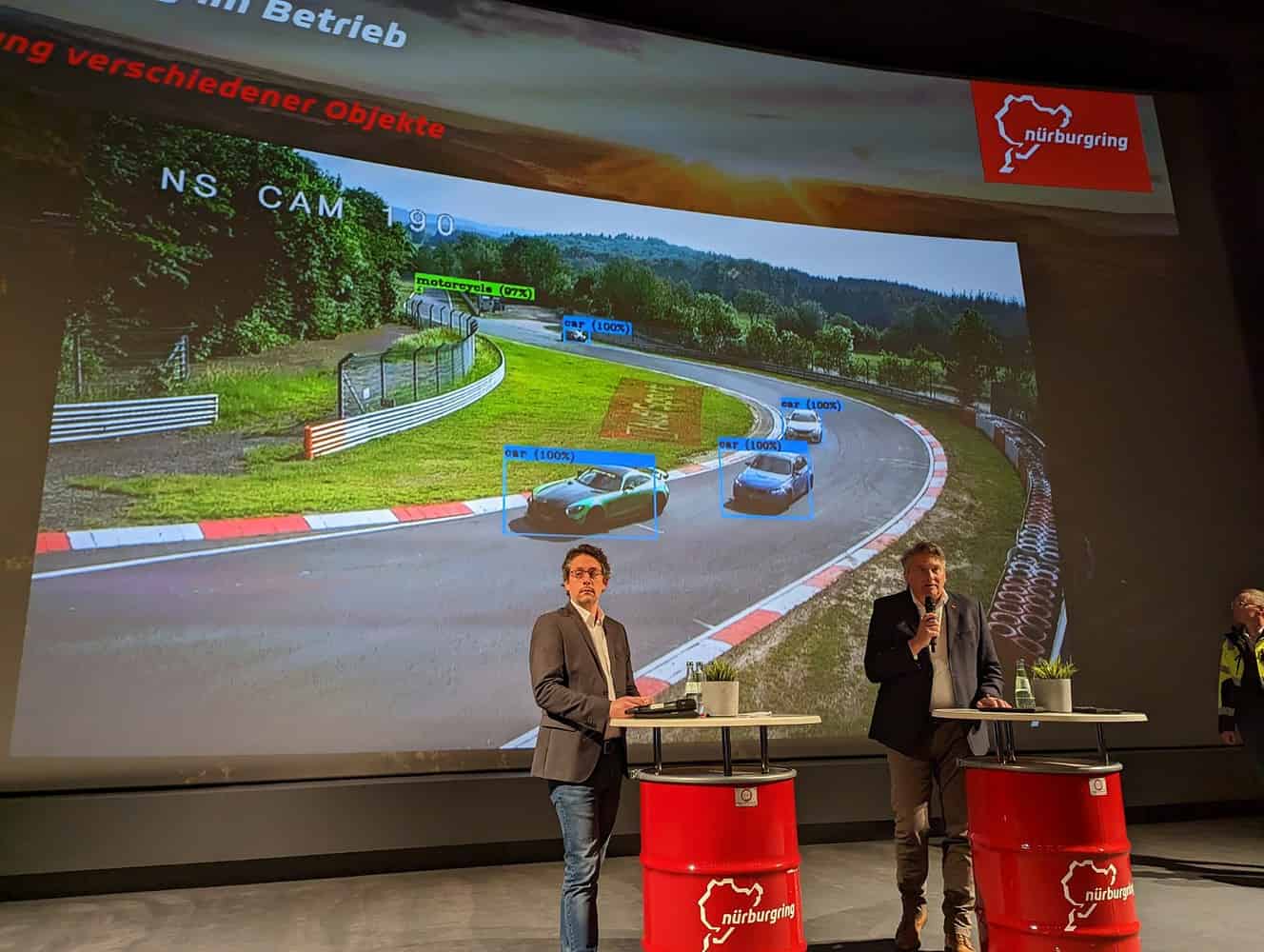
Currently, about 8.5 kilometers of the Nürburgring (on top of the test section) have been provided with the necessary infrastructure. To that end, some 17 kilometers of cable have already been put into the ground. Next winter the rest of the circuit will follow, if all goes well. After that it will be a matter of fine-tuning and the whole thing could go live in 2025. At least that is the intention, if everything goes according to plan.
Conclusion: mainly an infrastructure project, Fujitsu role relatively small but important
All in all, the project surrounding the safety of the Nürburgring is primarily a major challenge in terms of infrastructure construction. That is also where the lion’s share of the investments are going, the actual laying of the many dozens of kilometers of fiber optics. The part that Fujitsu is taking on is not so exciting in that regard. Only a fraction of the investments go there.
In itself, that makes sense, because objectively speaking, analyzing video data within a closed and ultimately quite predictable environment is not that exciting either. Everyone drives in the same direction, you can only overtake on the left on the Nordschleife and no really complex traffic situations are to be expected. Granted, on a busy day there are up to 150 cars on the Nordschleife at the same time, and not everyone will follow the rules, but that is not really a challenge for a well-trained ML model. Nor does the model have to take any other input into account, with the exception of that from some sensors for weather, among other things. No complex additional IoT network has been rigged (yet) to collect even more data.
With the above observation, we do not want to downplay the importance of what Fujitsu is doing on the Nordschleife. Quite the contrary is true, actually. Fujitsu plays a crucial role. That is, without this relatively small role, it is impossible to significantly improve the safety of people on the track. If the ML model can relay in as good as real time an incident to racing control, it can immediately be displayed on large signs next to the track in the section in question. A tragic incident from a few years ago, where someone lost their life because they collided with an emergency vehicle after a turn, can then be prevented. And that’s what it’s all about in the end. Technological complexity isn’t very relevant, it’s much more about the impact the technology has. And that impact could be very substantial at the Nordschleife.
Finally, the construction of fiber optics and the availability of an AI/ML model also offers opportunities toward the future. You can think about improving the fan experience, for example, by making clips of great actions automatically available in a fan environment. Or making a full video of a lap on the Nordschleife available (for an additional fee) to those who drove a lap. Even in the area of insurance there are possibilities, if you can prove in detail that an incident was not your fault. All in all, we suspect that we haven’t heard the last of this digitization project at the Nürburgring.
